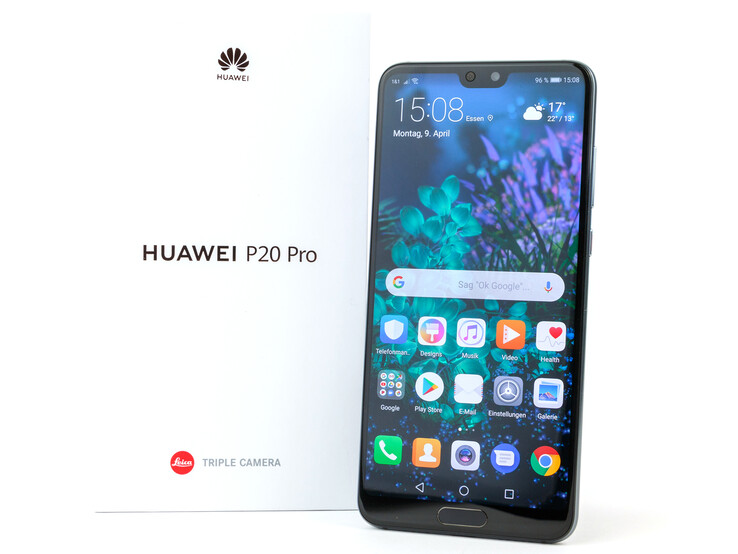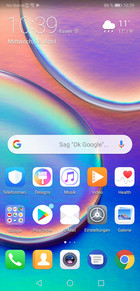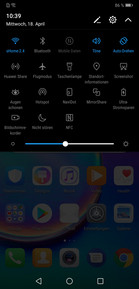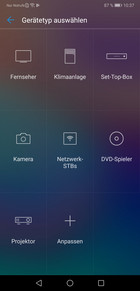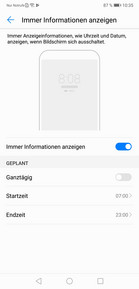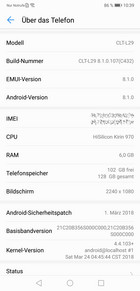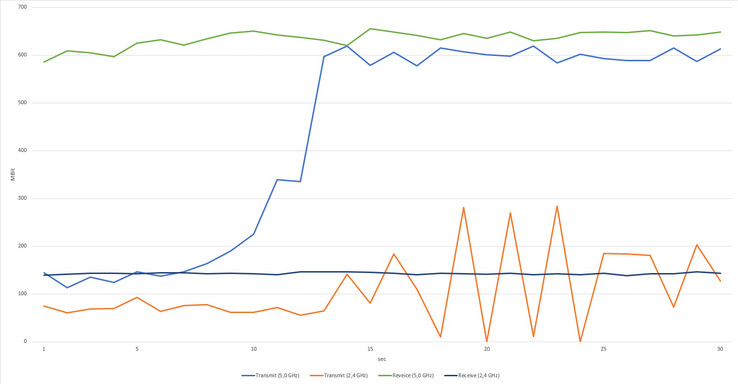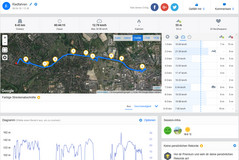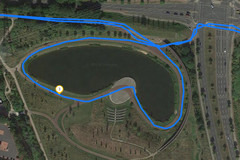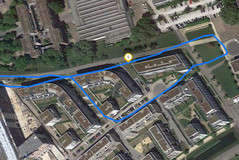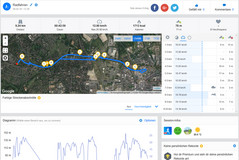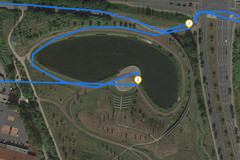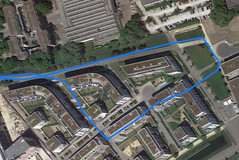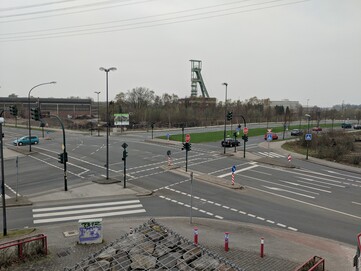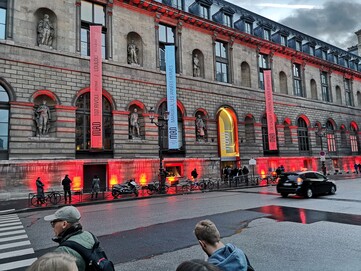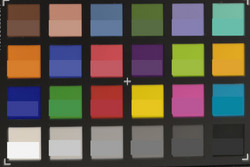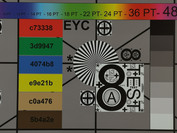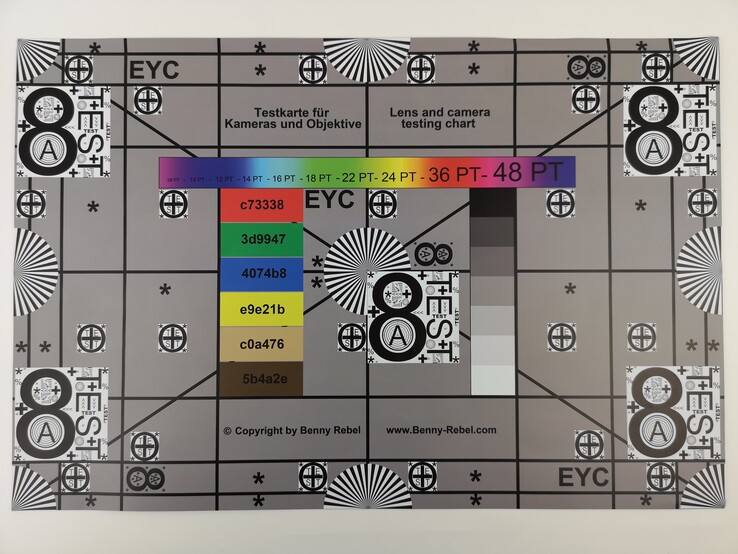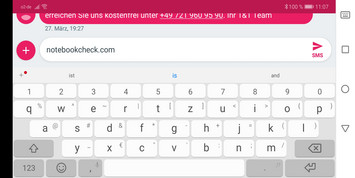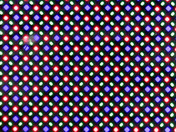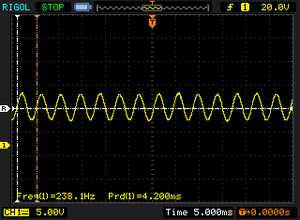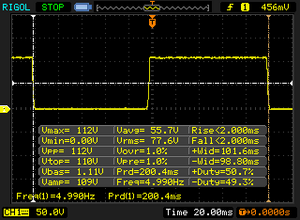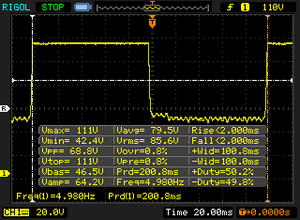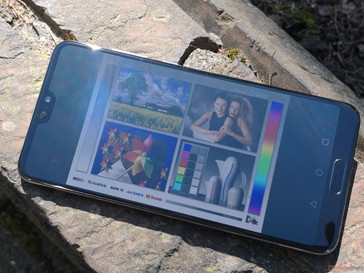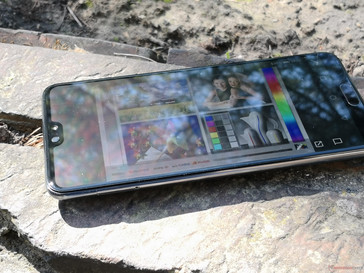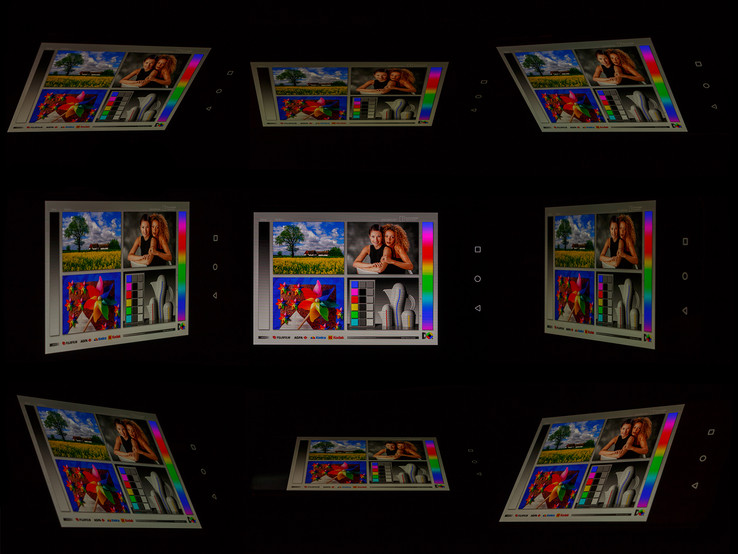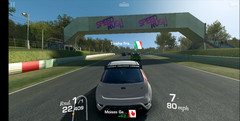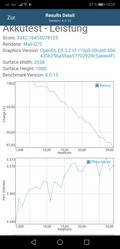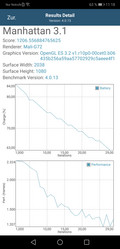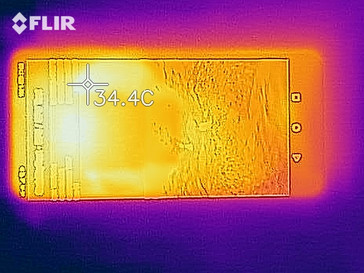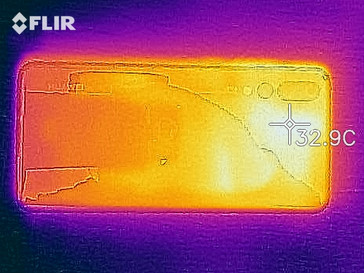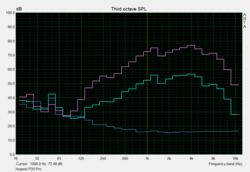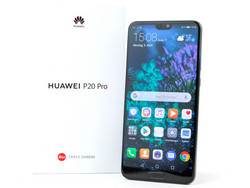Huawei P20 Pro Smartphone Review
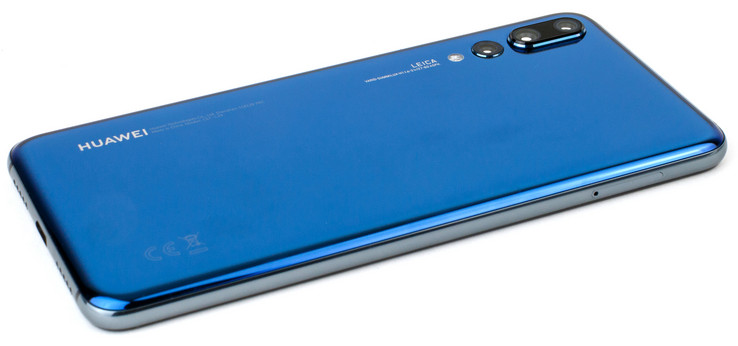
With the P20 Pro, Huawei has done more than just release an iterative update to last year’s P10 series. The most talked about features are the improvements in camera technology, but Huawei has changed the design language of the P series, particularly by releasing the P20 Pro in unusual colors. Huawei has followed this year’s trend by implementing a display with an 18.7:9 aspect ratio complete with the notch. Internally, the P20 Pro is powered by the same HiSilicon Kirin 970 SoC as in the Mate 10 Pro and Honor View 10. This is topped off with 6 GB of RAM and 128 GB of internal storage. There is no microSD card support though. The P20 Pro retains the fingerprint scanner which is located below the display as well as the IR blaster of other Huawei flagship devices. The highlight of the P20 Pro is undoubtedly its brand-new Leica Triple Camera, which Huawei CEO Richard Yu described as the best smartphone camera during the P20 Pro Paris launch event in March.
Currently the P20 Pro starts at €899 (~$1098) RRP, making it Huawei’s most expensive mobile device available without a contract. Huawei has released the P20 alongside the P20 Pro, which has a slightly smaller display, less RAM and a dual camera. The P20 Lite tops off the P20 series, but while it shares a similar design to its bigger siblings, it has little in common with their flagship internal hardware.
Huawei’s snappy marketing and confident pricing place the P20 Pro in the upper bracket of current flagship smartphones. We will be comparing the Huawei P20 Pro against the Samsung Galaxy S9 Plus, the Apple iPhone X, the LG V30, the Google Pixel 2 XL, and the HTC U11 Plus. We will also be comparing the P20 Pro against the OnePlus 5T as despite being far cheaper, the OnePlus 5T matches the internal hardware of much more expensive devices.
Update 06/20/2018: Huawei has published a new firmware for the P20 Pro. Details can be found in the Software section of this review.
Update 08/28/2018: Huawei released a new firmware for the P20 Pro. See the Software section for more details..
Case
The P20 Pro marks a change in Huawei’s strategy of releasing sleek P-Series devices with no camera bumps. The P20 Pro is noticeably thicker and heavier than the P10 Plus. Despite appearances, the P20 Pro is slimmer and lighter than the Mate 10 Pro. In our opinion, the P20 Pro looks bulkier, with the Mate 10 Pro feeling more comfortable in the hand thanks to its rounder back. Huawei has gone bolder on the P20 Pro’s color options, offering the device in Twilight, Pink Gold, Midnight Blue and Black. Twilight has an opalescent effect, varying between a greenish petrol color and lilac depending on the light, whereas Pink Gold looks like mother of pearl in certain lights.
The P20 Pro is well constructed. Our only gripe is that we would have liked the transition from the aluminium frame to the glass elements to have been more rounded. The gaps between materials are narrow, resulting in a sturdy case design that barely flexes under pressure. The power button and volume rocker are set into the case and have noticeable pressure points. The red accent down the power button is a nice aesthetic touch. The SIM tray is flush with the rest of the case and is made entirely from aluminium. The P20 Pro comes in either single or dual nano-SIM variants.
The P20 Pro is IP67 rated, meaning that it has complete protection against dust and can be immersed in up to 1m (~3 ft) of water for at least thirty minutes. The P20 Pro has a 4000 mAh Li-Polymer non-removable battery.
Connectivity
The P20 Pro shares much of its connectivity with that found on the Mate 10 Pro. The P20 Pro is USB Gen 3.1 rated, which is a major upgrade over the Mate 10 Pro and supports wired image output. This means that connecting the P20 Pro to an external monitor launches Android desktop mode like we have seen with Samsung DeX. While you do not need a docking station to do this, you will need to buy a USB Type-C to DisplayPort 1.2 or HDMI cable as Huawei do not include it in the box.
For those of you who prefer fewer cables, the P20 Pro supports Miracast and Wi-Fi Direct. There is NFC and Bluetooth 4.2 on-board too. While there is no support for Bluetooth 5.0, there is an integrated aptX HD module that can wirelessly transmit high-resolution audio content. Topping the connectivity options off is the dedicated 32-bit, 384k digital to analogue converter (DAC) and infra-red transmitter, the latter of which can control devices such as TVs, but not AV receivers or compact systems.
The P20 Pro has an LED notification light that can only be switched on or off with no configuration options. There is also an always-on display, the configuration for which is hidden within lock screen settings.
Unfortunately, the P20 Pro lacks wireless charging nor does it support FM radio.
Software
The P20 Pro ships with EMUI 8.1, a skinned version of Android 8.1 Oreo. The only significant difference between EMUI 8.0 and 8.1 is support for the P20 series notches. We received the P20 Pro with software version CTL-L29 8.1.0.107 (C432) with Android security patches dated March 1st, 2018.
As with the Mate 10 Pro, the P20 Pro supports Android desktop mode via a USB Type-C to DisplayPort 1.2 or HDMI cable, which worked well in practice. There is no wireless support for desktop mode; it is only possible to mirror your screen with Miracast or Wi-Fi Direct.
Update 06/20/2018: Huawei has published firmware update version CLT-L29 8.1.0.128(C432) for the P20 Pro (537 MB). It adds support for Google Smart Lock and includes Google’s security patches up to May 5, 2018.
Update 08/28/2018: Huawei rolls out firmware CLT-L29 8.1.0.152(C432) sized at 1.26 GB. Besides the GPU Turbo (here in review), the camera app is slightly optimized and the super slow-motion now includes an AI-based trigger automatic. The security patches are updated to July 1st, 2018.
Communication and GPS
According to Huawei, the P20 Pro supports Wi-Fi IEEE 802.11 a/b/g/n/ac and MIMO. We were sceptical at first as to whether the P20 Pro had a MIMO antenna onboard after our experience with the Mate 9. While Huawei announced that the Mate 9 would be equipped with a MIMO antenna, our Mate 9 review unit did not. Fortunately, the tests with our reference Linksys EA 8500 router proved that the P20 Pro has a MIMO antenna, with the P20 Pro stably achieving over 600 Mbps over a 5 GHz network. Our test device took a moment to get up to full transmission speed which we speculate could be the AI chip not allowing the device to immediately operate at full power, something which we also observed during our GPU tests. 2.4 GHz network performance is also good, but we noticed some fluctuations in transmission speed and occasional transmission drops. The P20 Pro has a strong range across both networks, with a slightly better range on 5 GHz.
As with Wi-Fi, the P20 Pro uses the Kirin 970 integrated modem for mobile connections. This supports LTE Cat. 18 with up to 1.2 Gbit/s transmission speeds. Nominally, the P20 Pro and Mate 10 Pro share the same modem. The P20 Pro supports two UMTS bands and one fewer LTE band. There should be no restrictions globally as the P20 Pro still has large frequency coverage. The P20 Pro had normal mobile phone signal during our tests.
The P20 Pro supports GPS, GLONASS, BeiDou and QZSS, and is accurate to three meters (~10 ft) outside. The P20 Pro is even accurate when next to a basement window, settling after a few moments to an accuracy of six meters (~20 ft). The P20 Pro lacks the barometer that the Mate 10 Pro has.
To further test the GPS accuracy, we take the P20 Pro on a bike ride and compare the route mapped with that of a Garmin Edge 500, a professional navigation device. After the first two kilometers (~1.2 mi), the P20 Pro’s energy saving mode kicked in, which brought the route mapping to a standstill. This explains the large deviations in the route mapped compared to the Garmin Edge 500. We set an exception for the tracking app in battery saving to circumvent this issue. Accuracy is ok, but not overly impressive. The P20 Pro tended to map our route next to the cycle route, rarely positioning us correctly. As such, the P20 Pro is suitable for more simple navigation tasks and lacks the accuracy necessary to be useful for bike rides.
Telephone Function and Call Quality
The call quality is decent, with there being only minor gripes. Calls are clear and easy to understand on both sides, but the speaker echoes a little in hands-free mode. We found that we could put the P20 Pro on a table during a call without affecting the call quality. Noise cancellation also works well, but we found the Mate 10 Pro to be even better in this respect.
The P20 Pro supports dual VoLTE and Wi-Fi calls. Bear in mind that your carrier will also need to support Wi-Fi calling for that feature to work.
Cameras
The selling point of the P20 Pro is its camera hardware. Initially, we had our doubts over the P20 Pro’s 24 MP front-facing camera with Lightfusion technology. Huawei used a 20 MP front-facing sensor in the Nova 2, with little tangible benefit to image quality. The P20 Pro performs much better though, producing pretty good shots even in low-light. The P20 Pro has a portrait mode like the iPhone X, in which the device can apply different lighting conditions to the same shot. While the iPhone X achieves this with different exposure filters, the P20 Pro is more sophisticated to the extent that it can shift the source of light. The P20 Pro has a ten-step beauty mode to beautify your selfies.
The front-facing camera can record videos at either 720p, 1080p or Full HD, which is at a resolution of 2,160x1080. You can beautify front-facing videos too, but only at 720p.
The real highlight is on the rear though, with the P20 Pro being the first smartphone with a triple camera array. The Leica branding is more than just marketing. The main camera is a 40 MP color sensor with a f/1.8 aperture, which is supported by a 20 MP monochrome sensor at f/1.6. The third camera is a zoom lens, offering three times optical zoom at 82 mm with an aperture of f/2.4 and OIS support. The P20 Pro implements Huawei’s Hybrid Zoom, delivering five times zoom by combining the data from the 40 MP sensor and the zoom lens. The purpose of this is to retain fine details that are at a distance. We found that Hybrid Zoom produced very good shots in everyday use. In weaker light, we preferred the results using Hybrid Zoom than what the three times optical zoom lens captured. The P20 Pro also supports up to ten times digital zoom. We tested the P20 Pro’s zoom capabilities against the competition, the images for which you can see below. Overall, the P20 Pro offers the most comprehensive and flexible package, with the best image quality in terms of our comparison devices. The Google Pixel 2 XL is the only comparison device that has no additional zoom technology, offering only an underwhelming digital zoom.
Huawei P20 Pro: no zoom, 3 x optical zoom, 5 x hybrid zoom, 10 x digital zoom (from left to right)
Samsung Galaxy S9 Plus: no zoom, 2 x optical zoom, 10 x digital zoom (from left to right)
OnePlus 5T: no zoom, 2 x optical zoom, maximum digital zoom (from left to right)
Apple iPhone X: no zoom, 2 x optical zoom, 10 x digital zoom (from left to right)
Google Pixel 2 XL: no zoom, maximum digital zoom (from left to right)
Huawei has improved their AI camera software for detecting different image modes, calling it Master AI. Huawei claims that Master AI can detect over five hundred scenarios across nineteen categories, automatically adjusting camera settings to help capture the best image possible. This can either be switched off in settings or disabled for individual shots within the Camera UI.
From left to right: 10 MP image with Master AI (scene: green), 40 MP image without Master AI
The P20 Pro particularly impresses with its low-light performance. Thanks to AI assisted stabilization (AIS), the P20 Pro can capture environmental images at up six seconds exposure. Huawei combines this with their Lightfusion technology, which stitches four pixels into one to capture greater detail and better lighting. As a result, the 1/1.7-inch sensor, with its 1.55 µm pixel size, delivers results that live up to Huawei’s “See Mooore” marketing. We have included some night shots in our example photographs in which there are visible cloud formations. These were not visible to the naked eye. The P20 Pro also has a night mode, which produces detailed photographs at between four to ten seconds exposure.
The P20 Pro also captures great images in daylight. The Camera app defaults to 10 MP, which produces the best snapshots and makes the best use of the AI software. At this resolution, the P20 Pro still makes use of Huawei’s Lightfusion technology. The 40 MP color and 20 MP monochrome sensors can be used individually at full resolution, each of which produces detailed and impressive images. There is a pro mode, which is Huawei terminology for a manual control mode. While the 40 MP sensor takes advantage of this, the monochrome sensor cannot. In our opinion, the manual controls are better optimized and easier to use on the P20 Pro compared to its predecessor. Portrait mode can make use of the full triple camera array and produces even better shots than the front-camera does. Likewise, there is an aperture mode that can produce bokeh effect shots. Additionally, the P20 Pro supports many camera modes, some of which have not been improved. For example, time lapse photos can still only be shot at 720p. Other devices, such as the BQ Aquaris X Pro, can do this in Ultra HD.
Photography with the Huawei P20 Pro. Model: Lara Vogel
Huawei has also improved the quality of video recordings, particularly reducing the issue where the brightness would drop when shooting in Full HD at 60 FPS that affects the P10 Plus. However, there are still some visual noise and artefacts in uniform color areas when shooting in this mode. The P20 Pro performs well when shooting with conventional Full HD and Ultra HD. Additionally, the microphone array records clear stereo sound with low noise. It is a shame that Ultra HD videos are limited to ten minutes, and not possible at 60 FPS. Like the Galaxy S9 Plus or the Xperia XZ2, the P20 Pro can capture videos at up to 960 FPS. This must be activated manually and can only be shot at 720p.
In summary, the P20 Pro has a superb triple camera, which not only performs well but also has a plethora of options. Hobbyists will be delighted at the ease of taking good photographs, while discerning photographers will be impressed at what this smartphone can do.
We examined the Leica triple camera under controlled lighting conditions to further test the P20 Pro’s imaging performance. In our color test, we turned off all filters and the Master AI. This resulted in relatively natural and slightly saturated colors. Meanwhile, we measured a moderately warm white balance.
We took the photograph of our test chart in standard mode, which is at 10MP with AI on. Focus is sharp at the center of the chart, while color gradients are clean. Only the fonts on a dark background lack edge sharpness. We can see a slight blur at the edge of the picture, which is not present in normal images. The 40 MP sensor improves edge sharpness. Unfortunately, the same cannot be said for the 20 MP monochrome sensor, with visible blurring at the edges of the image.
We also tested the zoom lens, which always delivers sharp results at the center of the test chart. The Hybrid Zoom performed excellently, confirming our subjective initial impressions.
From left to right: no Zoom, three times optical zoom, five times Hybrid Zoom, ten times digital zoom
Accessories and Warranty

The P20 Pro comes with a clear cover, a SIM tool, a modular power supply, a USB Type-A to Type-C cable, and a USB Type-C to 3.5 mm headphone jack adapter. We cannot comment on any paperwork such as quick start guides, warranties or safety notices as our review unit did not come with these. These should be expected in retail versions though. Huawei is including a pair of Bose QuietComfort 35 II headphones with every P20 Pro pre-order. While originally a limited time offer, this has been extended because of the high volume of initial pre-orders.
The P20 Pro comes with a twenty-four month warranty. At the time of writing, Huawei did not offer a thirty-six-month warranty option as they do with the P10 and P10 Plus. Please see our Guarantees, Return Policies and Warranties FAQ for country-specific information.
Input Devices & Operation
The P20 Pro has a 6.1-inch capacitive ten-point multitouch display. The touchscreen is easy to use, with inputs recognized quickly and reliably, including sliding or swiping gestures. There is an option in the settings to obscure the display notch. The P20 Pro achieves this by creating a software black bar around the notch, effectively cutting off the areas around the notch.
Swype is the default pre-installed keyboard. If you prefer, you could download and use a different keyboard from the Google Play Store. As with the P10 Plus, the P20 Pro has a fingerprint scanner on the back of the device that supports gestures. These are customizable, meaning that it is possible to completely replace on-screen controls. Unlocking the device with a fingerprint is also quick. It would have been nice had the fingerprint scanner been integrated into the display as with the Huawei Mate RS, although potentially at the expense of gesture support.
The P20 Pro has many options to make using the device easier. These include one-handed mode, glove mode, and fingerprint gestures. The EMUI lacks an app drawer by default. This can be activated in the settings.
Display
The P20 Pro has a nominally larger display than the current Mate 10 Pro, with a 6.1-inch display at a resolution of 2,2240x1,080 and an 18.7:9 aspect ratio. While the display is sharp, we would have expected at least a 1,440p display for a device at this price.
The P20 Pro has an OLED panel that has an average brightness of 578 cd/m² with the ambient light sensor activated and a purely white image displayed on the screen. This value increases to 660 cd/m² at the center of the display with the APL 50 test, which measures brightness with uniformly distributed light and dark areas. While this is a high value, the Galaxy S9 Plus, the iPhone X and Mate 10 Pro are all brighter at 691 cd/m², 750 cd/m² and 897 cd/m² respectively.
As mentioned earlier, the P20 Pro has an always-on display. This first must be activated in settings and can be found under “Always show information”. Since the display is an OLED panel, the P20 Pro uses pulse width modulation (PWM) to regulate brightness. We measured PWM at 238 Hz, which means that you will not fare any better with the P20 Pro if you have problems with other OLED displays. The amplitude is relatively flat and on par with displays in Samsung Galaxy smartphones.
Huawei implements what they call Natural Tone Display, which is similar to Apple’s True Tone Display. The brightness sensor regulates the display’s color temperature according to the ambient light. This automatically reduces blue light in dark environments by increasing the color temperature. The P20 Pro also has a night mode. Thanks to the combination of software and the minimum luminosity of 1.6 cd/m², the P20 Pro is ideal for reading eBooks even in the dark.
| |||||||||||||||||||||||||
Brightness Distribution: 95 %
Center on Battery: 569 cd/m²
Contrast: ∞:1 (Black: 0 cd/m²)
ΔE ColorChecker Calman: 1.3 | ∀{0.5-29.43 Ø4.77}
ΔE Greyscale Calman: 1.6 | ∀{0.09-98 Ø5}
Gamma: 2.31
CCT: 6401 K
| Huawei P20 Pro OLED, 2240x1080, 6.1" | Huawei P10 Plus LTPS, 2560x1440, 5.5" | Apple iPhone X Super AMOLED, 2436x1125, 5.8" | Samsung Galaxy S9 Plus Super AMOLED, 2960x1440, 6.2" | Google Pixel 2 XL P-OLED, 2880x1440, 6" | LG V30 OLED, 2880x1440, 6" | OnePlus 5T AMOLED, 2160x1080, 6" | HTC U11 Plus Super LCD 6, 2880x1440, 6" | |
|---|---|---|---|---|---|---|---|---|
| Screen | -38% | -4% | -38% | -64% | -136% | -39% | -55% | |
| Brightness middle (cd/m²) | 569 | 568 0% | 600 5% | 565 -1% | 415 -27% | 432 -24% | 425 -25% | 361 -37% |
| Brightness (cd/m²) | 578 | 562 -3% | 606 5% | 571 -1% | 420 -27% | 428 -26% | 423 -27% | 356 -38% |
| Brightness Distribution (%) | 95 | 92 -3% | 94 -1% | 96 1% | 87 -8% | 87 -8% | 92 -3% | 90 -5% |
| Black Level * (cd/m²) | 0.43 | 0.21 | ||||||
| Colorchecker dE 2000 * | 1.3 | 2.4 -85% | 1.2 8% | 2.3 -77% | 2.7 -108% | 4.18 -222% | 2.1 -62% | 2.5 -92% |
| Colorchecker dE 2000 max. * | 2.1 | 3.8 -81% | 3 -43% | 4.8 -129% | 4.3 -105% | 8.53 -306% | 3.4 -62% | 5.3 -152% |
| Greyscale dE 2000 * | 1.6 | 2.5 -56% | 1.6 -0% | 1.9 -19% | 3.3 -106% | 5.3 -231% | 2.5 -56% | 1.7 -6% |
| Gamma | 2.31 95% | 2.37 93% | 2.23 99% | 2.16 102% | 2.36 93% | 2.33 94% | 2.32 95% | 2.21 100% |
| CCT | 6401 102% | 6779 96% | 6707 97% | 6332 103% | 6787 96% | 7487 87% | 6455 101% | 6580 99% |
| Contrast (:1) | 1321 | 1719 |
* ... smaller is better
Screen Flickering / PWM (Pulse-Width Modulation)
| Screen flickering / PWM detected | 238.1 Hz | ||
The display backlight flickers at 238.1 Hz (worst case, e.g., utilizing PWM) . The frequency of 238.1 Hz is relatively low, so sensitive users will likely notice flickering and experience eyestrain at the stated brightness setting and below. In comparison: 53 % of all tested devices do not use PWM to dim the display. If PWM was detected, an average of 8091 (minimum: 5 - maximum: 343500) Hz was measured. | |||
The P20 Pro has an optimal black value thanks to its OLED display. Each pixel can be individually turned on or off, which in theory creates an infinite contrast ratio.
We measured color space accuracy across different color modes by using CalMAN, an analysis software, and a photo spectrometer. By default, the P20 Pro is set to vivid and a standard color temperature, giving the display a slightly blue tint. We recommend switching to normal and standard to view and take photos for the best color accuracy. There are no visible differences in grayscale or in mixed colors. One minor gripe is that only the smaller sRGB color space is used in normal and standard mode, while DCI-P3 is used in vivid mode.
When calibrated, the P20 Pro has one of the best panels among our comparison devices, with only the iPhone X coming close to the quality of the P20 Pro’s display.
Display Response Times
| ↔ Response Time Black to White | ||
|---|---|---|
| 4 ms ... rise ↗ and fall ↘ combined | ↗ 2 ms rise | |
| ↘ 2 ms fall | ||
| The screen shows very fast response rates in our tests and should be very well suited for fast-paced gaming. In comparison, all tested devices range from 0.1 (minimum) to 240 (maximum) ms. » 15 % of all devices are better. This means that the measured response time is better than the average of all tested devices (20.2 ms). | ||
| ↔ Response Time 50% Grey to 80% Grey | ||
| 4 ms ... rise ↗ and fall ↘ combined | ↗ 2 ms rise | |
| ↘ 2 ms fall | ||
| The screen shows very fast response rates in our tests and should be very well suited for fast-paced gaming. In comparison, all tested devices range from 0.165 (minimum) to 636 (maximum) ms. » 14 % of all devices are better. This means that the measured response time is better than the average of all tested devices (31.6 ms). | ||
The P20 Pro benefits from its high contrast and brightness when using the device outdoors. Content remains readable even in direct sunlight. We noticed that the display strongly reflects light at acute viewing angles, although this would not be an issue when holding the device.
Performance
The P20 Pro is powered by a HiSilicon Kirin 970, which we first saw in the Mate 10 Pro. This is coupled an ARM Mali-G72 MP12 GPU and 6 GB of RAM. While six months ago the Kirin 970 could top our smartphone CPU benchmarks, it has now been superseded by the Qualcomm Snapdragon 845 and the Samsung Exynos 9810.
The P20 Pro performs exceptionally in the benchmarks and as expected for a Kirin 970 powered device. EMUI 8.1 runs smoothly, although we noticed some minor stutters when we activated the Google feed on the home screen.
| Lightmark - 1920x1080 1080p (sort by value) | |
| Huawei P20 Pro | |
| Huawei Mate 10 Pro | |
| Samsung Galaxy S9 Plus | |
| HTC U11 Plus | |
| Google Pixel 2 XL | |
| Average HiSilicon Kirin 970 (21.5 - 25.9, n=2) | |
| Basemark ES 3.1 / Metal - offscreen Overall Score (sort by value) | |
| Huawei P20 Pro | |
| Huawei Mate 10 Pro | |
| Samsung Galaxy S9 Plus | |
| Apple iPhone X | |
| HTC U11 Plus | |
| Google Pixel 2 XL | |
| Average HiSilicon Kirin 970 (788 - 887, n=2) | |
| Average of class Smartphone (205 - 7731, n=34, last 2 years) | |
Google Chrome is the default browser. While we noticed no issues during testing, the P20 Pro does not perform well in all benchmarks. This is noticeable in Java applications where performance just falls short of our comparison devices. By contrast, the P20 Pro scored highly in WebXPRT 2015.
| JetStream 1.1 - Total Score | |
| Apple iPhone X (IOS 11.1.1) | |
| Samsung Galaxy S9 Plus (Samsung Browser 7.0) | |
| OnePlus 5T (Chrome 63) | |
| HTC U11 Plus (Chrome 63) | |
| Google Pixel 2 XL (Chrome 62) | |
| Huawei P10 Plus | |
| Huawei P20 Pro (Chrome 65) | |
| Huawei Mate 10 Pro (Chrome 61) | |
| LG V30 (Chrome 62) | |
| Average HiSilicon Kirin 970 (33.1 - 58.6, n=8) | |
| Octane V2 - Total Score | |
| Average of class Smartphone (2228 - 121337, n=195, last 2 years) | |
| Apple iPhone X (IOS 11.1.2) | |
| Samsung Galaxy S9 Plus (Samsung Browser 7.0) | |
| OnePlus 5T (Chrome 63) | |
| Huawei P20 Pro (Chrome 65) | |
| HTC U11 Plus (Chrome 63) | |
| Google Pixel 2 XL (Chrome 62) | |
| LG V30 (Chrome 62) | |
| Huawei Mate 10 Pro (Chrome 61) | |
| Huawei P10 Plus (Chrome 58.0.3029.83) | |
| Average HiSilicon Kirin 970 (6692 - 11838, n=8) | |
| Mozilla Kraken 1.1 - Total | |
| Average HiSilicon Kirin 970 (3591 - 6221, n=8) | |
| Huawei P20 Pro (Chrome 65) | |
| LG V30 (Chrome 62) | |
| Huawei Mate 10 Pro (Chrome 61) | |
| Google Pixel 2 XL (Chrome 62) | |
| HTC U11 Plus (Chrome 63) | |
| Huawei P10 Plus (Chrome 58.0.3029.83) | |
| OnePlus 5T (Chrome 63) | |
| Samsung Galaxy S9 Plus (Samsung Browser 7.0) | |
| Average of class Smartphone (257 - 28190, n=154, last 2 years) | |
| Apple iPhone X (IOS 11.1.2) | |
| WebXPRT 2015 - Overall | |
| Apple iPhone X (Safari Mobile 11.0) | |
| Google Pixel 2 XL (Chrome 62) | |
| Huawei P20 Pro (Chrome 65) | |
| OnePlus 5T (Chrome 63) | |
| HTC U11 Plus (Chrome 63) | |
| Average HiSilicon Kirin 970 (119 - 187, n=8) | |
| Samsung Galaxy S9 Plus (Samsung Browser 7.0) | |
| Huawei Mate 10 Pro (Chrome 61) | |
| Huawei P10 Plus | |
| LG V30 (Chrome 62) | |
* ... smaller is better
The P20 Pro has 128 GB of UFS 2.1 internal storage, of which 116 GB is usable. Huawei have reduced their firmware size compared with their other smartphones, occupying just 8.34 GB on our test device. There is no microSD card support to expand the internal storage space.
The UFS 2.1 storage performed well in AndroBench with impressive transfer speeds.
| Huawei P20 Pro | Huawei P10 Plus | Samsung Galaxy S9 Plus | OnePlus 5T | Google Pixel 2 XL | LG V30 | Average 128 GB UFS 2.1 Flash | Average of class Smartphone | |
|---|---|---|---|---|---|---|---|---|
| AndroBench 3-5 | -2% | -24% | -26% | -20% | -41% | 7% | 309% | |
| Sequential Read 256KB (MB/s) | 832 | 733 -12% | 819 -2% | 699 -16% | 760 -9% | 669 -20% | 761 ? -9% | 2243 ? 170% |
| Sequential Write 256KB (MB/s) | 196.7 | 182.6 -7% | 204.9 4% | 203.4 3% | 195.3 -1% | 193.2 -2% | 296 ? 50% | 1865 ? 848% |
| Random Read 4KB (MB/s) | 144.3 | 173.1 20% | 129.7 -10% | 138.1 -4% | 170.6 18% | 78.2 -46% | 154 ? 7% | 296 ? 105% |
| Random Write 4KB (MB/s) | 160.5 | 149.8 -7% | 22.74 -86% | 20 -88% | 17.84 -89% | 10.21 -94% | 130.4 ? -19% | 339 ? 111% |
Games
The ARM Mali-G72 MP12 handles graphics and offers great performance while supporting all the latest APIs. The GPU performed consistently during our tests, with the P20 Pro playing games at high frame rates even at high levels of detail. Curiously, “Shadow Fight 3” will only play at medium details despite reaching more than 60 FPS. We have no idea why there is no option to play at high quality.
Otherwise, playing games on the P20 Pro is a lot of fun. Games are displayed clearly on the large display, while the two speakers provide decent sound. The sensors worked reliably during our tests.
| Real Racing 3 | |||
| Settings | Value | ||
| high | 51 fps | ||
| World of Tanks Blitz | |||
| Settings | Value | ||
| high, 0xAA, 0xAF | 60 fps | ||
| Shadow Fight 3 | |||
| Settings | Value | ||
| minimal | 60 fps | ||
Emissions
Temperature
The P20 Pro has impressive surface temperatures, remaining lukewarm under continuous load.
We tested the extent to which the P20 Pro can maintain its performance under load by using GFXBench battery test, which records the battery level and framerates while running the benchmark for thirty times in a loop. Interestingly, performance improves during the test rather than deteriorating, with the Neural Network Processing Unit (NPU) initially allowing the P20 Pro to run at less than full power. Performance is more even in the Manhattan benchmark, with the P20 Pro never dropping below 1,200 FPS. Most of our comparison devices fall below the 1,000 FPS threshold at some point during the benchmark. For example, while the Galaxy S9 Plus is nominally faster than the P20 Pro, its lowest performance during the benchmark is at 862 FPS. Only the iPhone X is consistently faster than the P20 Pro, achieving at least 1,500 FPS.
(+) The maximum temperature on the upper side is 35.6 °C / 96 F, compared to the average of 35.2 °C / 95 F, ranging from 21.9 to 247 °C for the class Smartphone.
(+) The bottom heats up to a maximum of 34.3 °C / 94 F, compared to the average of 34 °C / 93 F
(+) In idle usage, the average temperature for the upper side is 29.6 °C / 85 F, compared to the device average of 32.9 °C / 91 F.
Speakers
There are two speakers, which flank the USB Type-C port on the bottom of the device. While they sound good, they could produce a more balanced sound for our liking. The Pink noise test reinforces this, showing a small break in the frequency range between 1,500 and 1,800 Hz. This makes the audio sound a bit dull when played through the speakers. The speakers reach up to 85 dB(A) with barely any distortion at maximum volume. One minor issue that we did notice is that mid-tones sound weaker than other tones at high volumes.
The P20 Pro has no 3.5mm headphone jack. Huawei includes headphones that connect via USB Type-C and a 3.5 mm to USB Type-C adaptor. The P20 Pro supports Dolby Atmos optimized sound for all headphones, even those that connect via the adaptor. The included headphones sound surprisingly good compared with the quality of those that are typically bundled with devices. The P20 Pro has aptX HD support too, so you can send high-resolution audio signals to your wireless aptX HD supported headphones while still retaining all that sound quality.
Huawei P20 Pro audio analysis
(+) | speakers can play relatively loud (84.9 dB)
Bass 100 - 315 Hz
(-) | nearly no bass - on average 21% lower than median
(±) | linearity of bass is average (9.5% delta to prev. frequency)
Mids 400 - 2000 Hz
(±) | higher mids - on average 5% higher than median
(±) | linearity of mids is average (7.2% delta to prev. frequency)
Highs 2 - 16 kHz
(±) | higher highs - on average 5.6% higher than median
(+) | highs are linear (4.5% delta to prev. frequency)
Overall 100 - 16.000 Hz
(±) | linearity of overall sound is average (20.1% difference to median)
Compared to same class
» 32% of all tested devices in this class were better, 9% similar, 59% worse
» The best had a delta of 11%, average was 35%, worst was 134%
Compared to all devices tested
» 51% of all tested devices were better, 8% similar, 41% worse
» The best had a delta of 4%, average was 24%, worst was 134%
Samsung Galaxy S9 Plus audio analysis
(+) | speakers can play relatively loud (85.6 dB)
Bass 100 - 315 Hz
(-) | nearly no bass - on average 22.8% lower than median
(±) | linearity of bass is average (12.2% delta to prev. frequency)
Mids 400 - 2000 Hz
(+) | balanced mids - only 3.2% away from median
(+) | mids are linear (3.2% delta to prev. frequency)
Highs 2 - 16 kHz
(+) | balanced highs - only 4.4% away from median
(+) | highs are linear (4.8% delta to prev. frequency)
Overall 100 - 16.000 Hz
(±) | linearity of overall sound is average (17.3% difference to median)
Compared to same class
» 11% of all tested devices in this class were better, 8% similar, 81% worse
» The best had a delta of 11%, average was 35%, worst was 134%
Compared to all devices tested
» 31% of all tested devices were better, 8% similar, 60% worse
» The best had a delta of 4%, average was 24%, worst was 134%
Apple iPhone X audio analysis
(+) | speakers can play relatively loud (85.3 dB)
Bass 100 - 315 Hz
(±) | reduced bass - on average 14.9% lower than median
(±) | linearity of bass is average (9.4% delta to prev. frequency)
Mids 400 - 2000 Hz
(+) | balanced mids - only 3.4% away from median
(+) | mids are linear (5.1% delta to prev. frequency)
Highs 2 - 16 kHz
(±) | higher highs - on average 7.3% higher than median
(+) | highs are linear (4.6% delta to prev. frequency)
Overall 100 - 16.000 Hz
(±) | linearity of overall sound is average (19% difference to median)
Compared to same class
» 24% of all tested devices in this class were better, 9% similar, 67% worse
» The best had a delta of 11%, average was 35%, worst was 134%
Compared to all devices tested
» 44% of all tested devices were better, 8% similar, 48% worse
» The best had a delta of 4%, average was 24%, worst was 134%
Battery Life
Power Consumption
The P20 Pro has extremely good power consumption. This does not always correlate with good battery life though, as we saw with the Galaxy S9 Plus. Setting the P20 Pro to full brightness with the brightness sensor activated, increases power consumption by around 0.5 W. Power consumption under load is drastically lower than our comparison devices. We reckon that the NPU is scaling down the power draw for the P20 Pro to achieve such low average and maximum load values.
The P20 Pro can only be charged by USB Type-C as there is no wireless charging support. Huawei’s Super Charge technology fully recharges the P20 Pro’s 4,000 mAh battery in ninety-one minutes.
| Off / Standby | |
| Idle | |
| Load |
|
Key:
min: | |
| Huawei P20 Pro 4000 mAh | Huawei P10 Plus 3750 mAh | Samsung Galaxy S9 Plus 3500 mAh | Apple iPhone X 2716 mAh | HTC U11 Plus 3930 mAh | Google Pixel 2 XL 3520 mAh | LG V30 3300 mAh | Average HiSilicon Kirin 970 | Average of class Smartphone | |
|---|---|---|---|---|---|---|---|---|---|
| Power Consumption | -132% | -21% | -66% | -55% | -74% | -44% | -88% | -107% | |
| Idle Minimum * (Watt) | 0.84 | 1.03 -23% | 0.68 19% | 1.03 -23% | 0.51 39% | 1.28 -52% | 0.72 14% | 0.978 ? -16% | 0.845 ? -1% |
| Idle Average * (Watt) | 1.54 | 2.61 -69% | 0.95 38% | 2.4 -56% | 1.62 -5% | 1.87 -21% | 1.37 11% | 2.12 ? -38% | 1.44 ? 6% |
| Idle Maximum * (Watt) | 1.57 | 2.83 -80% | 1.09 31% | 2.6 -66% | 1.87 -19% | 1.89 -20% | 1.41 10% | 2.51 ? -60% | 1.625 ? -4% |
| Load Average * (Watt) | 2.47 | 7.03 -185% | 4.58 -85% | 2.96 -20% | 3.92 -59% | 3.73 -51% | 3.46 -40% | 5.01 ? -103% | 7.01 ? -184% |
| Load Maximum * (Watt) | 2.49 | 10.08 -305% | 5.16 -107% | 6.6 -165% | 8.27 -232% | 8.08 -224% | 7.83 -214% | 8.1 ? -225% | 11.3 ? -354% |
* ... smaller is better
Battery Life
The P20 Pro has very good battery life thanks to its large battery and the combination of efficient hardware and software. During our battery tests, we set the display to 150 cd/m² luminosity. It is worth noting that some of our comparison devices have better battery runtimes than the P20 Pro despite having smaller battery capacities. The LG V30, for example, lasts 11% longer at idle and 4% longer in our Wi-Fi tests despite having a 3,300 mAh battery.
Noticeably, the Mate 10 Pro has up to 15% better battery life depending on the circumstances even though it has the same battery capacity and shares a lot of the same hardware. This is reflected in Huawei’s battery life estimates for the Mate 10 Pro and P20 Pro. We can only speculate that this is software or display notch related.
In everyday use, you can expect the P20 Pro to last for a very long time. The camera is the only stock app to eat into the battery life. The P20 Pro has numerous battery saving options to eke out a charge if necessary.
| Huawei P20 Pro 4000 mAh | Huawei P10 Plus 3750 mAh | Samsung Galaxy S9 Plus 3500 mAh | HTC U11 Plus 3930 mAh | Apple iPhone X 2716 mAh | Google Pixel 2 XL 3520 mAh | LG V30 3300 mAh | OnePlus 5T 3300 mAh | Huawei Mate 10 Pro 4000 mAh | |
|---|---|---|---|---|---|---|---|---|---|
| Battery runtime | -14% | -25% | -16% | -29% | -13% | -1% | -7% | 11% | |
| Reader / Idle (h) | 28.8 | 27.6 -4% | 22.4 -22% | 27.1 -6% | 21.5 -25% | 28.4 -1% | 31.9 11% | 29.2 1% | 29.1 1% |
| H.264 (h) | 13.1 | 12.6 -4% | 11.2 -15% | 10.2 -22% | 10.6 -19% | 11.2 -15% | 13.7 5% | 13.3 2% | 15.5 18% |
| WiFi v1.3 (h) | 12.4 | 12.7 2% | 8.7 -30% | 10.1 -19% | 9.4 -24% | 9.7 -22% | 12.9 4% | 12 -3% | 13.6 10% |
| Load (h) | 5.8 | 2.9 -50% | 4 -31% | 4.9 -16% | 3 -48% | 5 -14% | 4.5 -22% | 4.3 -26% | 6.6 14% |
Pros
Cons
Verdict
The Huawei P20 Pro is an excellent smartphone. The P20 Pro is based largely on the Mate 10 Pro, the latter of which does a few things better than the P20 Pro. The Mate 10 Pro has a more aesthetically pleasing design, longer battery life, better call quality all for €250 (~$305) less at the time of writing. The big advantage for the P20 Pro is its Leica Triple Camera, which blows the Mate 10 Pro and the competition out of the water.
Huawei has set new standards for mobile photography with its Leica Triple Camera. The P20 Pro is the device against which all other smartphone cameras will now be compared.
The Huawei P20 Pro has premium hardware beyond its outstanding camera. The Kirin 970 is a fast SoC, there is plenty of internal storage, a fast USB port, speedy MIMO Wi-Fi, IP67 certification, strong LTE performance, aptX HD support. All of this comes with a large 4,000 mAh battery and an impressive display. There are a few drawbacks though, which are worth mentioning. The P20 Pro could perform better over 2.4 GHz Wi-Fi, and equally, we would have liked a 3.5 mm headphone jack and expandable storage. We would have also expected a 1,440p display for a device released at this price point in 2018.
Despite this, the quality of the Leica Triple Camera shines through. The P20 Pro not only takes great pictures, but the software is flexible enough to take impressive shots regardless of what you throw at it, even in low-light. Video recording could be better though, although this is nit-picking. For example, the P20 Pro cannot record at 60 FPS at Ultra HD, nor is 60 FPS at Full HD that impressive either despite improving on the performance of its predecessor. Overall, the P20 Pro currently has the best camera of any smartphone.
Huawei P20 Pro
- 04/19/2018 v6 (old)
Daniel Schmidt




